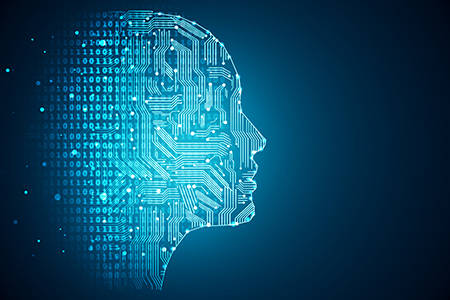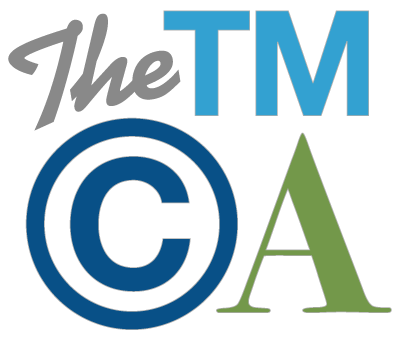AI Inventorship Still a No-Go, But Will the Copyright Office Change Its Tune for Music Created by AI?
 The rise of Artificial Intelligence (AI) over the past decade is undeniable, and we reap its benefits throughout the day when using our smartphones, managing our bank accounts, listening to a customized playlist, shopping online, etc. What may be less apparent to the casual observer is the use of AI in creative endeavors. Some AI technologies have reached a point where they can now effectively perform creative tasks, such as inventing devices or machines, composing music, or even writing novels. We are only now beginning to see the impact of such uses of AI in the development of intellectual property law.
The rise of Artificial Intelligence (AI) over the past decade is undeniable, and we reap its benefits throughout the day when using our smartphones, managing our bank accounts, listening to a customized playlist, shopping online, etc. What may be less apparent to the casual observer is the use of AI in creative endeavors. Some AI technologies have reached a point where they can now effectively perform creative tasks, such as inventing devices or machines, composing music, or even writing novels. We are only now beginning to see the impact of such uses of AI in the development of intellectual property law.
The development of AI creation applications is raising important questions for intellectual property policymakers. Last year, the USPTO sought public comment on IP protection for inventions created using AI. It received nearly 200 responses and launched a page on its website providing information on AI initiatives, public notices and responses, and outside resources. This move left many to wonder whether AI innovations would begin to receive increased IP protection, where, historically, such protection has been thin or nonexistent, when the creative process is known.
The USTPO recently responded to such speculation when it issued its decision confirming the refusal for patent protection for an invention generated by “DABUS,” an AI machine. Stephen Thaler filed U.S. Patent application number 16/524,350 with the USPTO last July, with the sole inventor listed as “DABUS, the Creativity machine that has produced the…invention.” The USPTO issued a Notice to File Missing Parts of Nonprovisional Application, requesting identification of each inventor by name, and refused to examine the patent. Thaler petitioned that this notice be vacated, which was denied, and then Thaler petitioned for reconsideration.
In denying Thaler’s petition for reconsideration, the USPTO pointed to statutes such as 35 U.S.C. §§ 100(f)–(g) and § 101, which use words such as “individual” and “whoever” in the context of inventorship to conclude that the Patent Act requires a human “natural person.” The USPTO also cited Federal Circuit precedent stating that the mental step of conception of an invention must be performed by a natural person, rather than corporations or sovereigns. It should be noted that the issue of inventorship, while necessary for validity, would likely not have been reached had Thaler named himself as inventor on the patent application, as the determination of the true inventor is still based solely on the supposition of a good faith filing by the patent applicant under current USPTO patent examination procedures. Furthermore, the process by which the invention was created is not something that the USPTO will examine, and so the use of AI in the inventive process is not going to negative an applicant’s claim of inventorship.
Non-human creators face similar obstacles in obtaining other types of IP protection as well. Just as AI machines are generating new inventions, AI programs are engaging in the creative process of generating musical compositions. As one example, LifeScore, an AI-augmented adaptive music platform, recently announced that it will be providing a live, adaptive soundtrack for Artificial, an interactive sci-fi and award-winning television series. LifeScore takes recorded musical raw material and processes it, via a proprietary AI platform, to create musical compositions that uniquely adapt to a listener’s environment and inputs without sounding synthetic or repetitive. For Artificial, viewer reaction will influence the music generated by LifeScore.
While AI musical compositions have started to create a stir in the music industry and even win awards, the question remains: will these soundtracks ever enjoy copyright protection? Notwithstanding the fact that the word “human” does not appear in the U.S. copyright statutes, currently, the answer to this question is no. As stated in the U.S. Copyright Office’s Compendium of U.S. Copyright Office Practices (Section 306), “Because copyright law is limited to ‘original intellectual conceptions of the author,’ the Office will refuse to register a claim if it determines that a human being did not create the work” (citing Burrow-Giles Lithographic Co. v. Sarony, 111 U.S. 53, 58 (1884)). This concept has also been more recently illustrated in the famous monkey selfie case where copyright protection was denied to a Celebes crested macaque, since the macaque is not a human. The question of copyright protection for computer-generated works is also not a new one; in fact, in 1965, the Copyright Office raised this concern when it stated that the office had previously received an application for a musical composition created by a computer, and it estimated “that both the number of works proximately produced or ‘written’ by computers and the problems of the Copyright Office in this area will increase.” This prediction has come to fruition.
Some may argue that the lack of IP rights to encourage investment and innovation to transform inventions and other works into merchantable commodities may disincentive such innovation and creation. At least for now, it seems as if IP law is not yet aligned to afford IP protection to the dramatic developments in AI technologies over the past decade. The USPTO has signaled that it is not ready to knowingly grant patents for innovations created without a human inventor. As companies seek to secure patent protection for more complex inventions, it stands to reason that some may simultaneously seek to obfuscate the inventive process or the involvement of AI machines in their creation. We can expect the USPTO to adapt its procedures over time to account for this, so companies should be prepared for more investigation into inventorship issues in the future. It will also be interesting to see if the Copyright Office is willing to change its tune and allow AI-generated works to enjoy copyright protection, especially when such works are receiving recognition in other forms.








